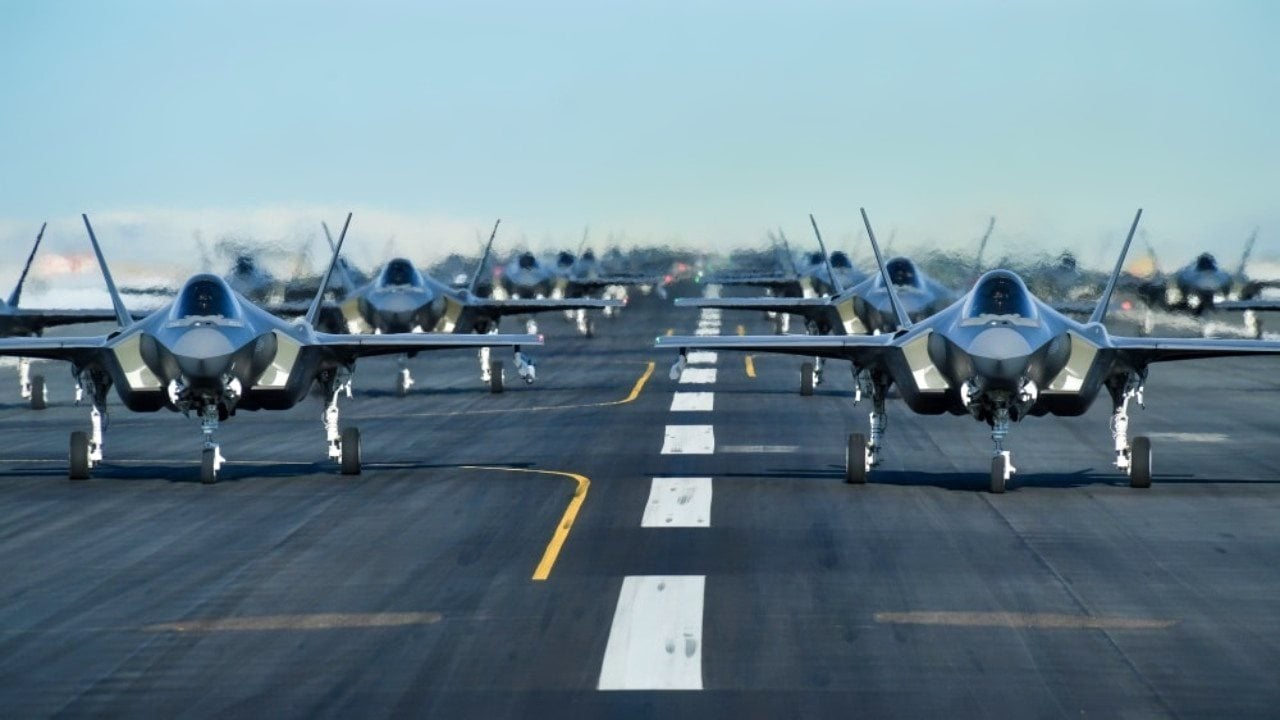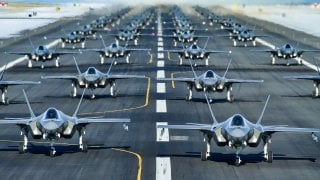F-35 Lightning II Fighter Finally Cleared to Fly in Lightning
The Lockheed Martin F-35 Lightning II has been rightfully compared to a high-performance race car. It is speedy, versatile, and cutting edge – but it doesn't perform so well in the rain, or at least in electrical storms. Despite being described as an "all-weather" aircraft, the fifth-generation stealth fighter wasn't been cleared to operate when lightning was present.
The Lockheed Martin F-35 Lightning II has been rightfully compared to a high-performance race car. It is speedy, versatile, and cutting edge – but it doesn't perform so well in the rain, or at least in electrical storms. Despite being described as an "all-weather" aircraft, the fifth-generation stealth fighter wasn't been cleared to operate when lightning was present.
Yes, there is some irony that the aircraft designated the Lightning II was grounded. Or at least it was, as the Pentagon has now lifted the lightning restrictions for the F-35A.
First reported by Breaking Defense on Monday, the conventional takeoff and landing variant of the Joint Strike Fighter had been prohibited from flying within 25 miles of lightning since June 20202, when damaged tubes were found installed on the On-Board Inert Gas Generation System (OBIGGS) in several aircraft. The OBIGGS is there to prevent the jet from exploding when being struck by lightning by pumping nitrogen-enriched air into the fuel tanks to make its contents inert, and damage to the tubes carrying the inert gas raised the specter that the system would not function properly in an emergency.
The Joint Strike Fighter Program Office (JPO) confirmed to Breaking Defense that the Department of Defense (DoD) lifted the restrictions on March 19 following a hardware and software fix for the lightning protection system. However, the JPO didn't confirm how many F-35As were modified with the fix, or have been cleared to fly near lighting, citing operational security concerns.
"The fix included a more robust On-Board Inert Gas Generation System (OBIGGS) hardware design along with software updates. Testing for these efforts was a combination of lab and flight testing," JPO spokesman Russ Goemaere told Breaking Defense.

"We credit the government and industry engineers who applied technical rigor, conducted analysis, and drove data-driven decision-making to overcome the challenges that were identified in 2022," Goemaere added. "The fix restores operational capability, while providing additional safety for the pilots and aircraft."
Only the F-35A Was Affected… Again
This is actually the second time that the issue of lightning strikes on the Lightning II was discovered. More than a decade ago it was found that the fuel tanks weren't receiving enough nitrogen-enriched gas to render them safe should lightning strike even once.
The OBIGGS was redesigned and the JPO cleared the F-35 to fly near electrical storms in 2014, but then the subsequent issue was found with the F-35A.
The problem didn't impact either the short/vertical takeoff and landing (SVTOL) F-35B variant or the F-35C, the U.S. Navy's carrier-based model.
However, in July 2021, two F-35Bs based out of Marine Corps Air Station Iwakuni, Japan suffered serious damage after being struck by lightning while in flight. Both aircraft were able to land safely and no Marines were injured in the incident, the Marine Corps said in a statement at the time per the Military Times.
The lightning strike caused enough damage to each of the fighter planes that both strikes were classified as a "Class A mishap." Such mishaps are defined as incidents that resulted in either death or permanent disability, or more than $2.5 million in damages.
This is why, despite the fix, the Air Combat Command stated that F-35 pilots are instructed to never fly directly into lightning conditions unless thunderstorm penetration is necessary to accomplish a mission.
Author Experience and Expertise: Peter Suciu
Peter Suciu is a Michigan-based writer. He has contributed to more than four dozen magazines, newspapers, and websites with over 3,200 published pieces over a twenty-year career in journalism. He regularly writes about military hardware, firearms history, cybersecurity, politics, and international affairs. Peter is also a Contributing Writer for Forbes and Clearance Jobs. You can follow him on Twitter: @PeterSuciu. You can email the author: [email protected].


